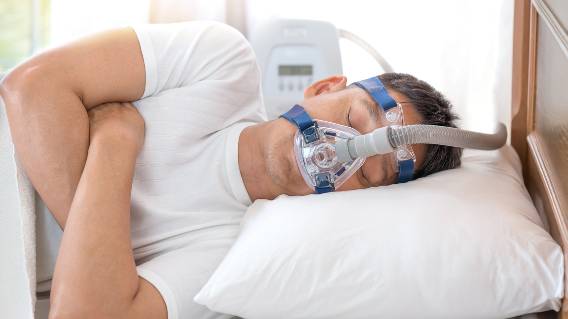Task Force: Insufficient Data to Recommend Sleep Apnea Screening
Editors carefully fact-check all Consumer Notice, LLC content for accuracy and quality.
Consumer Notice, LLC has a stringent fact-checking process. It starts with our strict sourcing guidelines.
We only gather information from credible sources. This includes peer-reviewed medical journals, reputable media outlets, government reports, court records and interviews with qualified experts.

There isn’t enough data on harms and benefits to recommend preventative screening for obstructive sleep apnea, also called OSA, according to the U.S. Preventative Screening Task Force.
In its Nov. 15 recommendation published in JAMA, the USPSTF said, “The current evidence is insufficient to assess the balance of benefits and harms of screening for OSA in the general adult population.”
USPSTF also found insufficient evidence to recommend preventative OSA screenings in 2017. The 2022 findings uphold its previous recommendation.
OSA occurs when airway obstructions cause a person to stop breathing several times a night. Symptoms include snoring, daytime sleepiness and poor concentration.
Currently, primary care physicians don’t conduct preventative screening for general population adults. Sometimes, doctors may refer patients to specialists if the patient complains of symptoms that are indicative of obstructive sleep apnea.
To properly assess the risks and harms of preventative screening, USPSTF said more studies are needed. These studies should provide information on developing more accurate screening tools for primary care physicians, more information on how OSA progresses from mild to severe and accurate risk assessment tools.
Expert Disagrees With Task Force Recommendation
Some experts disagree with the USPSTF’s recommendation. One of those experts is MaryAnn DePietro, a licensed respiratory therapist and contributing expert for Consumer Notice.
“Some individuals may not be aware they snore, gasp for air or have other symptoms often only noticed by a sleep partner. For example, people who sleep alone in their bed may be unaware they have these symptoms,” DePietro said. “Screening, using a simple questionnaire, may bring to a health care provider’s attention other symptoms, such as headaches and memory issues, which a patient did not connect to OSA.”
Unlike conducting a full sleep study, using a questionnaire essentially has no harms, other than extra time with the patient’s medical provider. The STOP questionnaire and others ask patients about their perceived quality of sleep, tiredness, high blood pressure, snoring and other symptoms of OSA.
What Are the Risks of OSA?
The risks of untreated OSA include cardiovascular issues, Type 2 diabetes, cognitive decline, lower quality of life and other health problems.
The number of people with OSA in the U.S. isn’t known, but USPSTF estimates it affects about 14% of men and 5% of women aged 30 to 70 years old.
CPAP machines are the first line of treatment for OSA. These machines use positive airway pressure to force air into a patient’s airway, allowing them to breathe better while sleeping.
Most of the time, CPAP side effects are minor and typically go away after a patient gets used to the machine. However, in some cases rare CPAP side effects can be serious.
For example, Philips recalled its CPAP, BiPAP and ventilator machines in 2021. Philips reported that exposure to degraded sound abatement foam particles and toxic gases could increase the risk of cancer and other illnesses.
After the recall, hundreds of patients filed CPAP lawsuits against Philips, claiming the company knew about the foam problem but continued to sell the machines anyway and failed to warn the public.